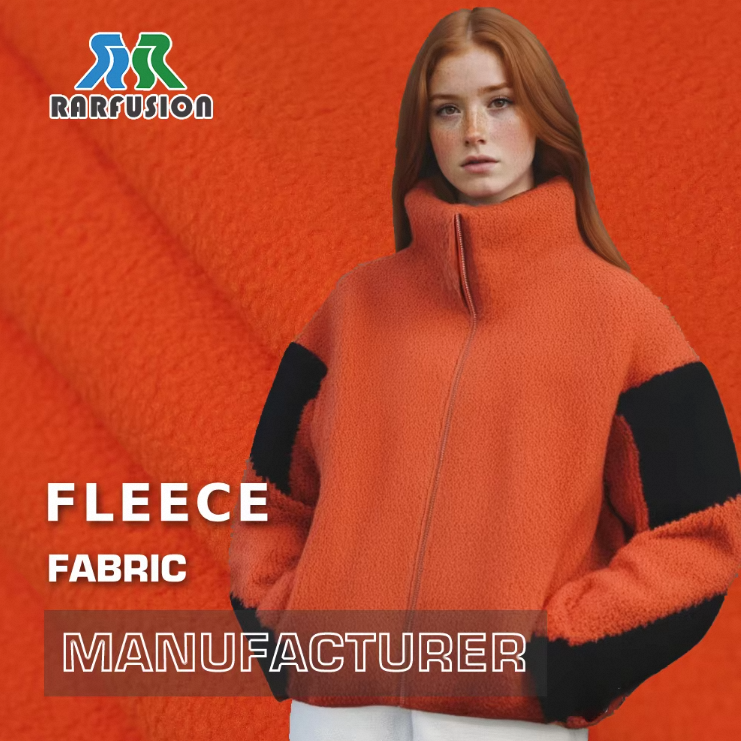هل تواجه صعوبة في البقاء دافئًا أثناء المشي في الطقس البارد دون استخدام طبقات ثقيلة؟ أنت لست وحدك. يعاني الكثير من محبي الأنشطة الخارجية من إحباط بسبب المعدات الثقيلة التي لا تمتص العرق بشكل كاف.
تعرف على قماش الفليس القطبي - الاكتشاف المبتكر الذي يحافظ على دفء جسمك ويمنحك خفة ويجفف العرق بسرعة. هذه المادة الكلاسيكية أحدثت ثورة في ملابس الأنشطة الخارجية.
في هذا الدليل، سنغوص في كل شيء بدءًا من أصوله وصولًا إلى النصائح العملية. هل أنت جاهز لتحديث خزانتك؟ دعونا نستكشف لماذا تستحق قماش الفليس القطبي مكانًا في ملابسك.

ما هو قماش البوليستر فليس ?
قماش الفليس القطبي هو مادة ناعمة وعازلة تُصنع من البوليستر. إنه يقلد الصوف لكنه يتفوق عليه في العديد من الجوانب. يحب الناس دفئه الخفيف وغيره من الميزات.
هذا القماش يحبس الهواء داخل أليافه. مما يخلق عزلًا حراريًا. كما يطرد الرطوبة بعيدًا عن بشرتك. مما يبقيك جافًا أثناء النشاط.
الفليس القطبي يأتي بأنواع مختلفة. فكُر في سترات، وأغطية، وقبعات. وهو أيضًا متعدد الاستخدامات للاستخدام اليومي.
يتميز بمقاومته للتكتلات ويحتفظ بشكله بعد الغسيل.
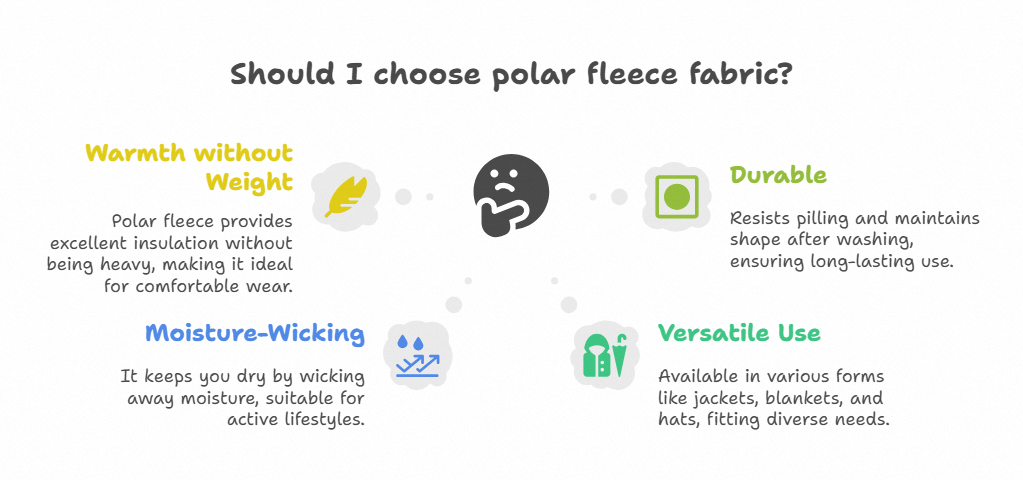
تاريخ الفليس القطبي
بدأ تطور الفليس القطبي عام 1979 في شركة مالدن ميلز في ماساتشوستس. حيث أنتجوا بديلًا صناعيًا خفيف الوزن ودافئًا للصوف. وساعدت شركة باتاغونيا في تطويره، وأطلقت عليه اسم 'سينشيلا'.
في عام 1981، أطلقت مالدن ميلز أول فليس صناعي قطبي. وقد غير مفهوم معدات الطقس البارد إلى الأبد. كان القماش أخف وزنًا، وأكثر دفئًا، وتنفسية أفضل من الصوف.

فهم أوزان الفليس القطبي: شرح أوزان 100 و200 و300
تُقاس أوزان الفليس بوحدة الغرام لكل متر مربع (gsm). الأرقام الأعلى تعني قماشًا أكثر دفئًا وسُمكًا.
ابدأ بوزن 100. إنه خفيف الوزن، أقل من 200 gsm. مناسب لطقس معتدل أو الت capa الطبقات. فكّر في الفليس الدقيق للاستخدام أثناء النشاط.
الوزن 200 في الوسط، بين 200 و300 gsm. يوازن بين الدفء والتهوية. مثالي للأنشطة الخارجية اليومية.
الوزن 300 هو الأثقل، أكثر من 300 gsm. يوفر عزلًا حراريًا قصوى. استخدمه في الظروف الباردة.
| الوزن | نطاق GSM | الأنسب لـ | مستوى الدفء |
|---|---|---|---|
| 100 | <200 | تراكب الطبقات، طقس معتدل | ضوء |
| 200 | 200-300 | الاستخدام اليومي في الهواء الطلق | متوسطة |
| 300 | >300 | برودة شديدة | مرتفع |
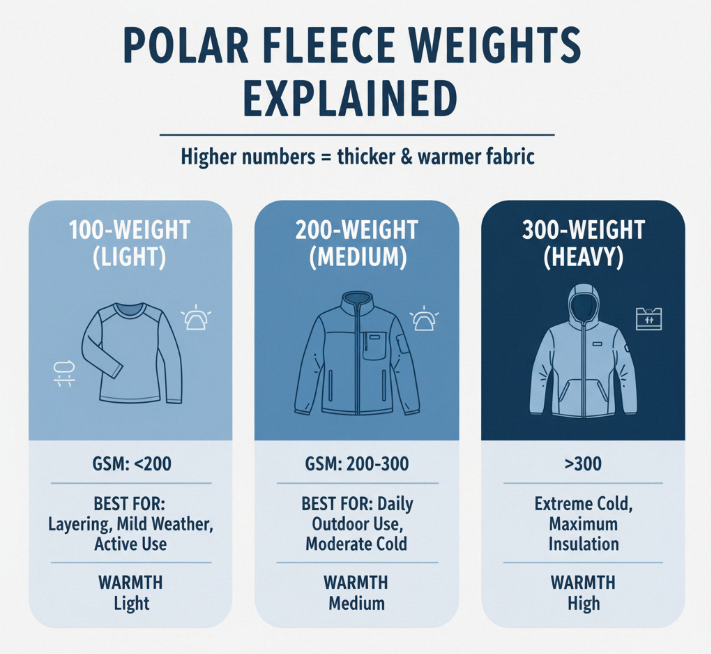
لماذا أصبح الفليس القطبي هو الخيار الأول لأنشطة الهواء الطلق
يحتاج معدات الهواء الطلق أن تكون دافئة وخفيفة وتجف بسرعة. الفليس القطبي يوفر كل ذلك. فهو يعزل دون أن يكون ثقيلًا.
يمتص العرق بعيدًا. تتجنّب البرودة الناتجة عن الرطوبة. مثالي للتنزه أو التزلج.
التنفس يمنع ارتفاع درجة الحرارة. تحرك بحرية دون تراكم العرق.
الدقة تبرز. فهو يتحمل الاستخدام الخشن والغسيل المتكرر.
ر مثال واقعي: أثناء مشي في الخريف، ضع بطانة من الصوف القطبي بوزن 200 تحت السترة. فتحافظ على دفئك أثناء الاستراحة ولكنها تسمح بالتنفس خلال التسلق. .
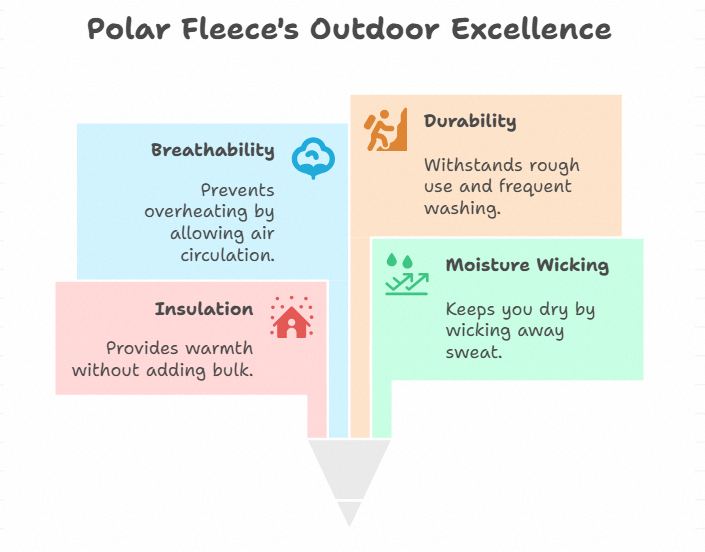
الصوف القطبي مقابل الصوف العادي: الفروقات الرئيسية
الصوف القطبي هو نوع محدد من الصوف. أما الصوف العادي فهو مصطلح أوسع.
الصوف القطبي له نتوءات على الجهتين. وهو أكثر سماكة ودفئاً. أما الصوف العادي فقد يكون أخف وزناً، مثل خامات القطن.
الدقة: الصوف القطبي يقاوم التكتلات بشكل أفضل. أما الصوف العادي فقد يبلى بسرعة أكبر.
الدفء: يتفوق الصوف القطبي في البرد الشديد. أما الصوف العادي فهو مناسب للطقس الأكثر اعتدالًا.
الخامات: الصوف القطبي عادةً ما يكون 100٪ بوليستر. أما الصوف العادي فقد يحتوي على خلطات ألياف.
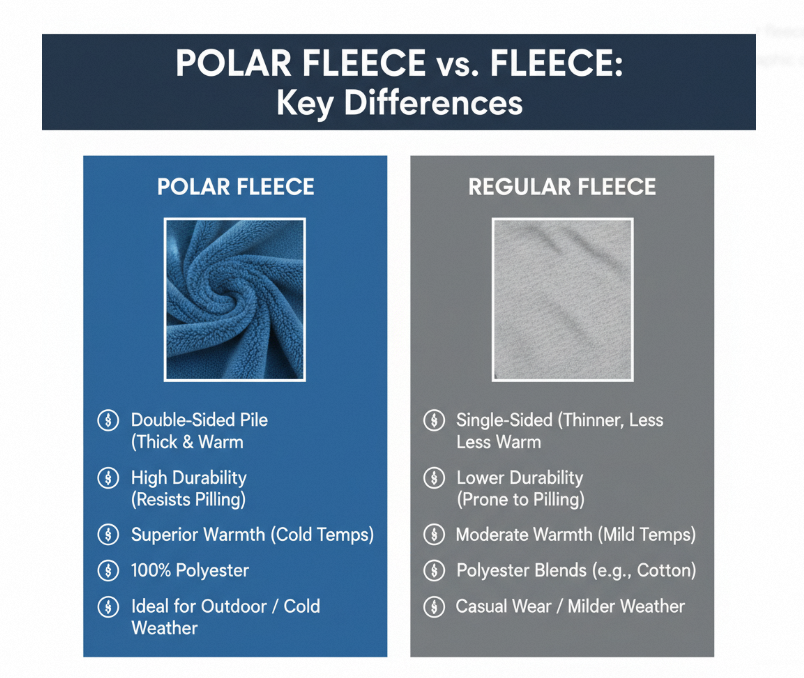
هل الصوف القطبي مقاوم للماء؟
لا، البوليستر المموج ليس مقاومًا للماء. فهو يقاوم الرطوبة الخفيفة ولكنه يمتص الماء عند هطول الأمطار الغزيرة.
ينقل الرطوبة بعيدًا بسرعة. يجف بسرعة إذا ابتل.
لزيادة مقاومة الماء، استخدم منتجات مثل Nikwax Polar Proof.
بعض الأنواع، مثل البوليستر المرن، تضيف طبقات مقاومة للماء.
مثال على الاستخدام: استخدمه كطبقة وسطى تحت سترة مقاومة للماء أثناء التنزه.

تعليمات العناية ببوليستر فروك
اغسل البوليستر المموج بشكل صحيح للحفاظ على نعومته. استخدم الماء البارد في دورة لطيفة.
تجنب الماء الساخن. فهو يسبب الانكماش.
لا تستخدم منعمات الأقمشة. فهي تقلل من قدرة النسيج على نقل الرطوبة.
جففه في الهواء أو باستخدام درجة حرارة منخفضة في المجفف. فإن الحرارة العالية تضر الألياف.
افرك بلطف بعد التجفيف لاستعادة النعومة.
اغسل القطعة مع أشياء مشابهة. تجنب التكتلات الناتجة عن السوستة.
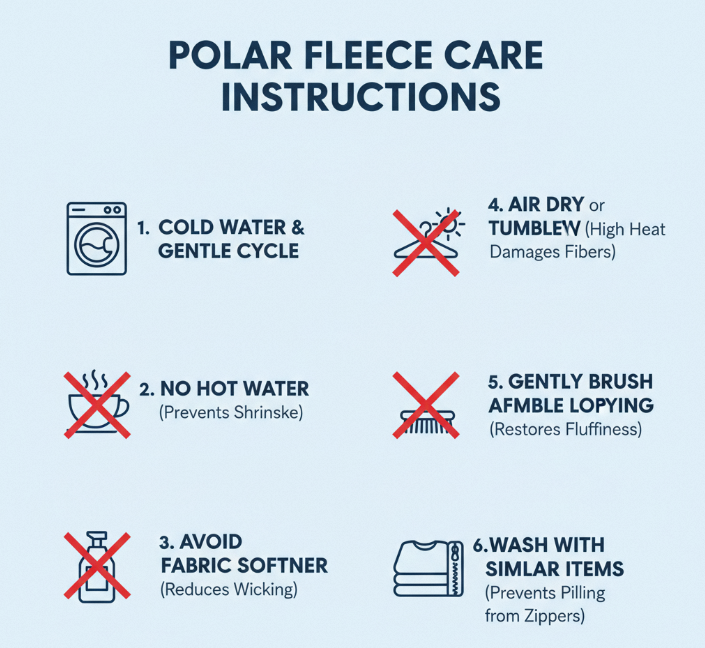
الاستدامة في قماش البولار فيس
يُصنع قماش البولار فيس غالبًا من بوليستر معاد تدويره، مما يقلل من نفايات البلاستيك.
تلتزم شركة رارفيوژن بالمسؤولية البيئية من خلال التركيز على استخدام مواد قابلة للتدوير.
شهادات مثل GOTS تضمن توفر خيارات عضوية.
وهو يقلل الاعتماد على النفط الخام الجديد.
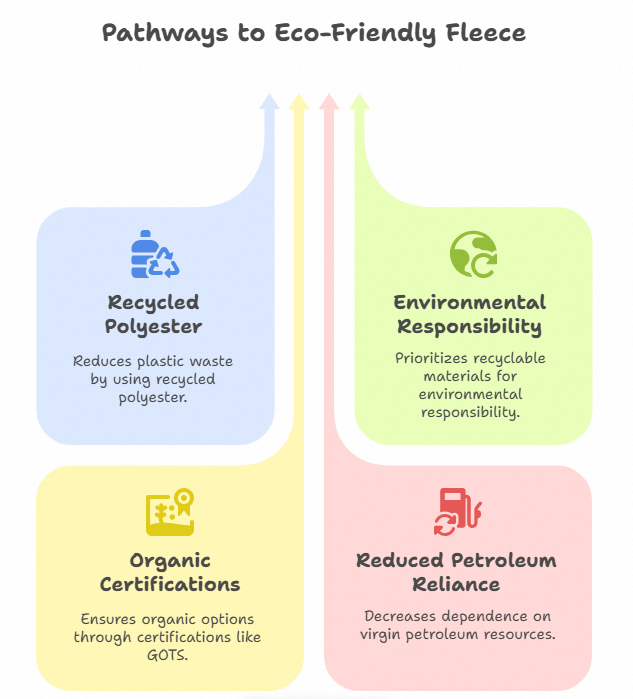
أسئلة شائعة
ما هو رارفيوژن فيز؟ هو علامة تجارية مميزة لقماش البولار فيس، وتُعرف بالابتكار والجودة.
هل الفليس القطبي مناسب للشتاء؟ نعم. خاصة الوزن 300 للبرد الشديد.
كيف يقارن الفليس القطبي بالصوف؟ أخف وزناً، وجاف أسرع، ومضاد للحساسية.
هل يمكنني كي الفليس القطبي؟ لا. استخدم مكواة بخارية بحرارة منخفضة إذا لزم الأمر.
أين يمكنني شراء فليس قطبي أخلاقي؟ ابحث عن الخيارات المعاد تدويرها من رارتوجن .
الاستنتاج
يحل الفليس القطبي مشكلة البقاء دافئًا في الهواء الطلق دون تعقيد. تجعله تاريخيته وتنوعه وأداؤه ضروريًا. سواء كنت تمشي في البراري أو تسترخي، فإنه يوفر الأداء المطلوب. هل أنت جاهز للتجربة؟ تحقق من رارتوجن المنتجات أو شارك قصتك المفضلة عن الفليس أدناه. يساعدنا رأيك في التحسن!
جدول المحتويات
- ما هو قماش البوليستر فليس ?
- تاريخ الفليس القطبي
- فهم أوزان الفليس القطبي: شرح أوزان 100 و200 و300
- لماذا أصبح الفليس القطبي هو الخيار الأول لأنشطة الهواء الطلق
- الصوف القطبي مقابل الصوف العادي: الفروقات الرئيسية
- هل الصوف القطبي مقاوم للماء؟
- تعليمات العناية ببوليستر فروك
- الاستدامة في قماش البولار فيس
- أسئلة شائعة
- الاستنتاج

